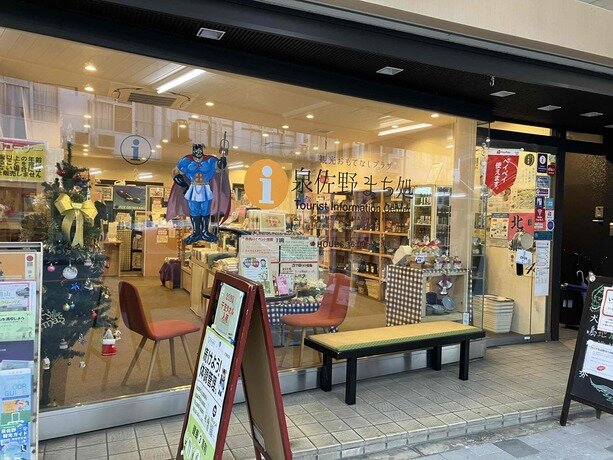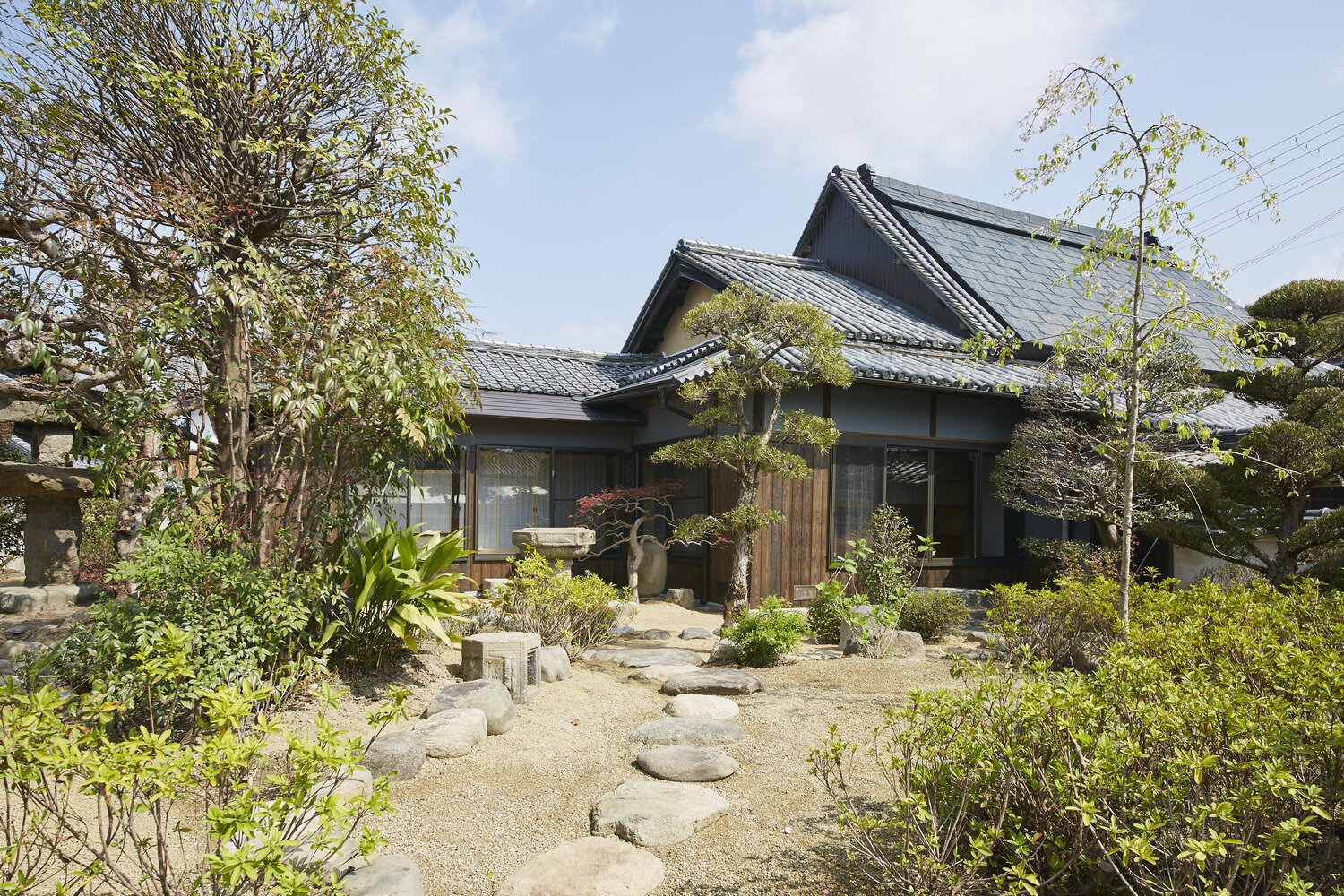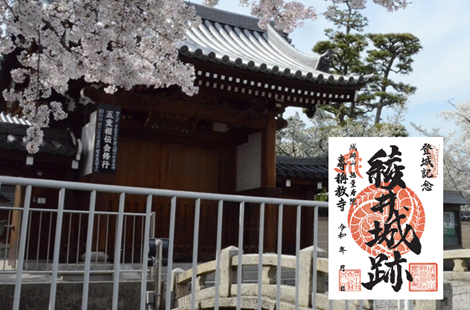
On tram to the historical town of Sakai
Sakai, which flourished as a trading port during the Warring States period, deepened its ties with the outside world and developed into a wealthy, free, autonomous city. Take a stroll around Sakai, where its unique history and spirit still thrives, on Osaka's only streetcar.
-
START
Hankai Electric Tramway Ebisucho Station
-
Hankai Electric Tramway
There are two lines: the Hankai Line, which connects Osaka's Ebisucho Station, where Tsutenkaku towers, to Hamadera Ekimae Station, and the Uemachi Line, which connects Tennoji Ekimae Station to Sumiyoshi Station. Osaka's only Chin Chin train has a very interesting sight as it runs past the eaves of private houses.
Hankai trainsee spotThe whole route costs 230 yen. The "Tekuteku Ticket" is a great deal at 680 yen, allowing you to get on and off as many times as you like!
Takasu Shrine Station 10 minutes walk -
Gunsmith's house
Guns arrived in Tanegashima in 1543. Sakai, where the manufacturing method was introduced, became famous as a major gun production area, and they contributed to the battles of warlords such as Oda Nobunaga, Toyotomi Hideyoshi, and Tokugawa Ieyasu during the Sengoku period. A 10-minute walk from Takasu Jinja Station is the residence of a gunsmith from the Edo period. The rows of stately old houses tell of the past.
3 minutes walk from Myokokujimae Station -
Sakai Knife Museum (Sakai Denshokan)
3 minutes walk southwest from Myokokujimae Station. During the Edo period, the Tokugawa shogunate had a monopoly on tobacco knives (knives for chopping tobacco leaves) marked with the "Sakai Kiwami" mark, and Sakai knives became known for their high quality and popularity throughout the country. At this facility, you can see, hear, and experience the history and process. In addition to the videos and materials, the finishing process ``blade attachment'' by craftsmen is very interesting. There is also a consultation and repair desk for knives.
2 minutes walk from Hanataguchi Station -
Xavier Park
The lush green park that can be seen from the window of the Chin Chin train is a relaxing spot for citizens. Francis Xavier, the first person to introduce Christianity to Japan, came to Sakai in 1550. This park was built on the site of the wealthy merchant Ryokei Hibiya's mansion, where he lived and carried out missionary activities. It was named in 1945 to commemorate the 400th anniversary of Xavier's arrival.
see spot2 minutes walk from Shukuin Station -
Akiko Yosano Birthplace Ruins

Akiko Yosano, a poet known for her songs ``Midaregami'' and ``Kimi Shitamafu Koto Nare'', was born on December 7, 1891, as the third daughter of Soshichi Otori, a confectionery merchant in Sakai, and Tsune. did. The house where he was born was destroyed by fire during World War II, but a monument commemorating his birthplace stands on the west side of the driveway. There are also monuments of Akiko's poems scattered throughout the city.
3 minutes walk from Shukuin Station -
Sen no Rikyu residence ruins
Sen no Rikyu, who mastered the tea ceremony, was also born in Sakai. Yoshiro (Rikyu) was born in 1522 as the eldest son of a wealthy fishmonger, and later studied under Joo Takeno and others and mastered the art of wabicha. Oda Nobunaga served Toyotomi Hideyoshi as a tea master, but he incurred Hideyoshi's anger and committed seppuku. A well remains at the site of the mansion.
Goryo-mae Station 7 minutes walk -
Nanshuji Temple
It was built by Miyoshi Nagayoshi, but was destroyed by fire during the Osaka Natsu Siege. Later, in 1617, the famous temple was rebuilt by the monk Takuan. It is known as the temple where the young Sen no Rikyu trained in the tea ceremony, and the grounds include the tea room Jissoan, which is associated with Rikyu, a chozubachi where he died, a memorial tower for the Senke clan, and a dry landscape garden designated as a national scenic spot. In fact, strangely enough, there is also Tokugawa Ieyasu's grave within the grounds...? A temple with surprising historical traditions.
Short walk from Hamadera Ekimae Station -
Hamadera Park
Hamadera Park, which stretches out in front of Hamadera Ekimae, the last stop on the Hankai Railway, is one of the oldest parks in the prefecture, having been established in 1896. Beautiful pine forests have been featured in poems since ancient times, and the remaining pine forests are still beautiful today. The park also has a rose garden, a transportation amusement park with mini locomotives, go-karts, and a playground. It is also a resting spot for local residents, with a monument to Akiko Yosano's poem, ``The mountains of my hometown, Izumi, floating brightly, and the morning breeze blowing from the sea.''
see spot - GOAL!
Additional Information
- drop-in spot
- If you want to know more about Akiko Yosano, please visit Sakai Toshiaki no Mori near Shukuin Station on the Hankai Railway. Go to the ``Akiko Yosano Memorial Museum.''
- Taste spot
- Walnut mochi in a can bag is recommended.
- souvenir
- You can also take the walnut mochi in the can bag home. The container is quite stylish.









